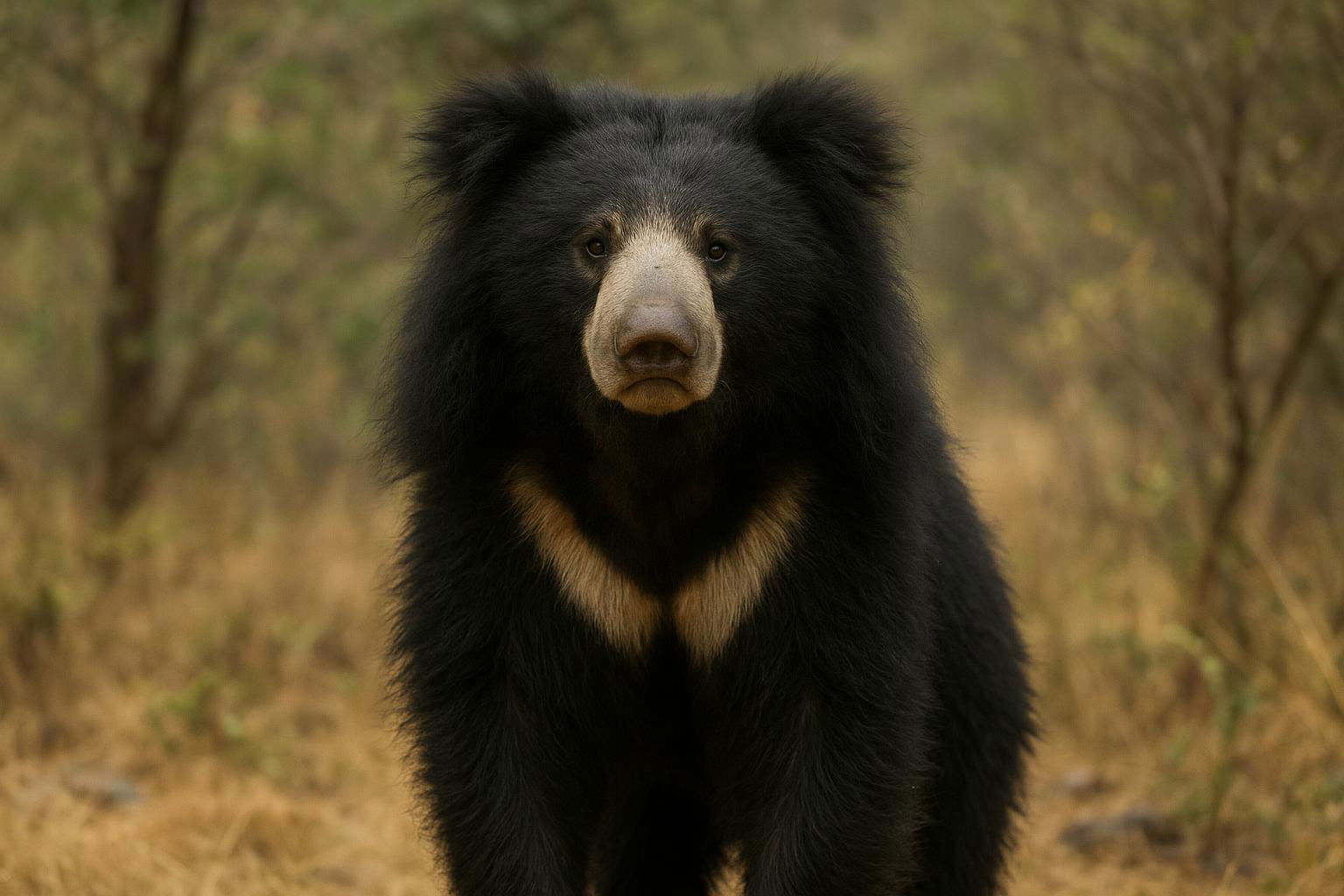
Sloth Bear
Melursus ursinus
The Sloth Bear (Melursus ursinus) is a distinctive species native to the Indian subcontinent, characterized by its disheveled, shaggy black coat and a striking white or cream-colored patch on its chest, which often resembles a "V" or "Y" shape. Renowned for its unique feeding habits, the Sloth Bear primarily consumes insects, particularly termites and ants, which it extracts using its specialized long, lower lip and a gap in its incisors, aiding in its ability to suck insects like a vacuum. Weighing between 55 to 145 kg (121 to 320 lbs) and measuring approximately 1.8 to 1.9 meters (5.9 to 6.2 feet) in length, this bear exhibits a lanky body with sickle-shaped claws adapted for digging and ripping apart termite mounds.
Despite its common name, the Sloth Bear is not related to sloths; this misnomer stems from its slow, deliberate movements. These nocturnal creatures are primarily solitary, coming together only for mating or when a mother rears her cubs. Females typically give birth to one or two cubs, which ride on their mother's back for safety during foraging excursions. Sloth Bears are capable climbers and swimmers, although they're more often found traversing forested grasslands, tropical forests, and scrublands. While generally shy, they can become aggressive when threatened, making their conservation challenging in human-dominated landscapes. The species is currently classified as Vulnerable due to habitat loss and poaching for body parts and the illegal pet trade, necessitating urgent conservation efforts.

 All Species & Breeds
All Species & Breeds
 Highland Cattle
Highland Cattle
 Miniature Donkeys
Miniature Donkeys
 All Species Directory
All Species Directory
 Highland Cattle in Virginia
Highland Cattle in Virginia
 Miniature Donkeys in Texas
Miniature Donkeys in Texas












